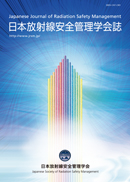Volume 2, Issue 1
Displaying 1-6 of 6 articles from this issue
- |<
- <
- 1
- >
- >|
-
2003 Volume 2 Issue 1 Pages 2-3
Published: 2003
Released on J-STAGE: March 17, 2011
Download PDF (970K) -
2003 Volume 2 Issue 1 Pages 12-17
Published: 2003
Released on J-STAGE: March 17, 2011
Download PDF (1779K) -
2003 Volume 2 Issue 1 Pages 19-25
Published: 2003
Released on J-STAGE: March 17, 2011
Download PDF (2086K) -
2003 Volume 2 Issue 1 Pages 26-32
Published: 2003
Released on J-STAGE: March 17, 2011
Download PDF (1193K) -
2003 Volume 2 Issue 1 Pages 33-37
Published: 2003
Released on J-STAGE: March 17, 2011
Download PDF (1304K) -
2003 Volume 2 Issue 1 Pages 38-39
Published: 2003
Released on J-STAGE: March 17, 2011
Download PDF (295K)
- |<
- <
- 1
- >
- >|
